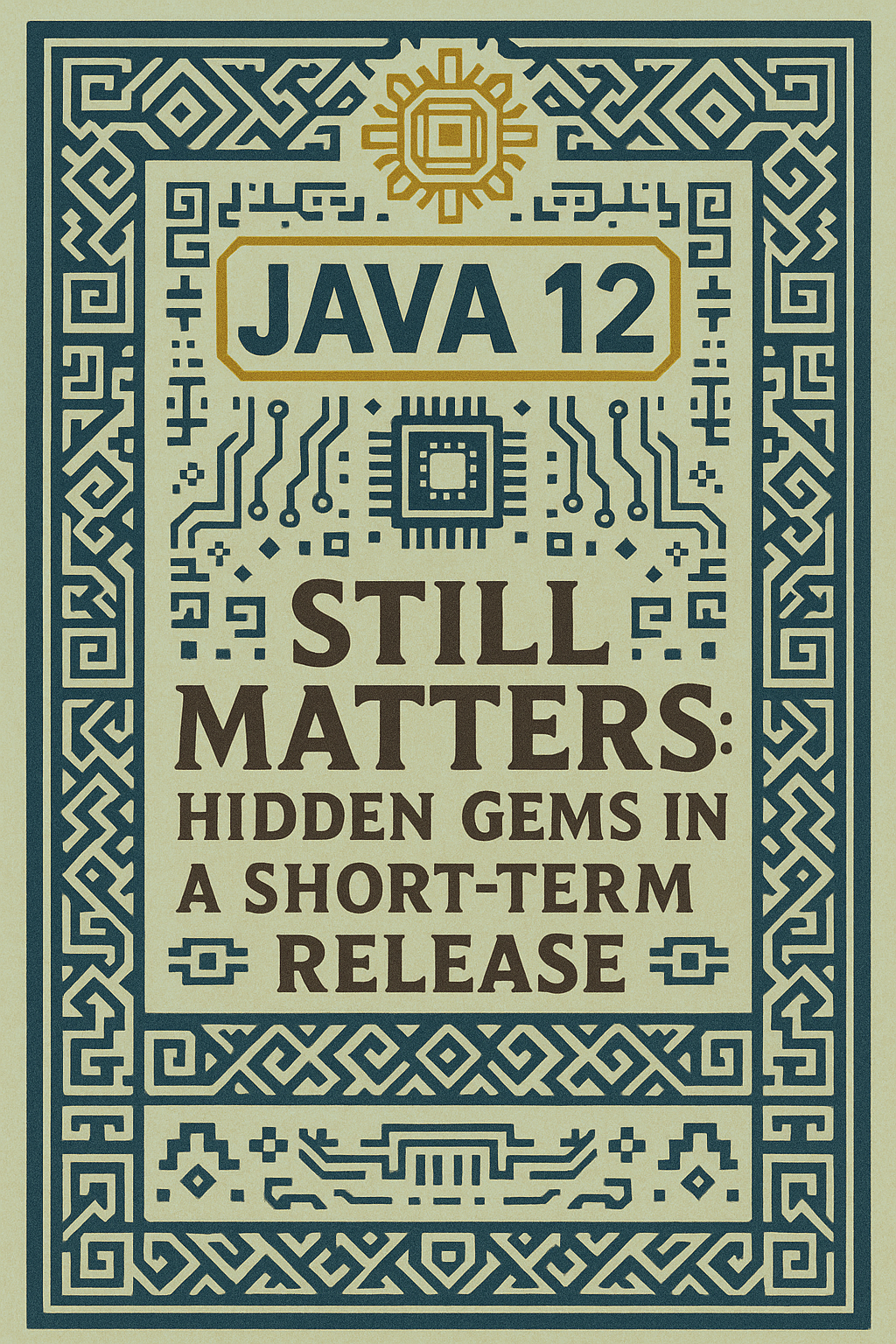Why Java 12 Still Matters: Hidden Gems in a Short-Term Release
- Published on
- Authors
- Name
- Spaghetti Code Jungle
- @spagcodejungle

Why Java 12 Still Matters: Hidden Gems in a Short-Term Release
Introduction
Java 12 landed in March 2019 as a non-LTS (Long-Term Support) release. While many developers tend to skip short-term versions, Java 12 introduced several developer-friendly features that continue to influence modern Java development.
Whether you're a junior developer exploring Java's evolution or a seasoned dev staying up to date, here’s a breakdown of the most impactful updates in Java 12—and why they still matter today.
Switch Expressions (Preview Feature) (JEP 325)
Java’s traditional switch statement was functional, but verbose and limited in flexibility. Java 12 introduced Switch Expressions as a preview feature (JEP 325), paving the way for more concise and expressive control flow.
Benefits:
- Eliminates fall-through behavior.
- Reduces boilerplate.
- Enables returning values directly.
Example:
int result = switch (day) {
case MONDAY, FRIDAY, SUNDAY -> 6;
case TUESDAY -> 7;
case THURSDAY, SATURDAY -> 8;
case WEDNESDAY -> 9;
};
No more long case blocks or break statements—just clean, expressive code.
JVM Constants API (JEP 334)
This feature enhances support for tools that interact with the Java classfile format—particularly useful for framework and compiler developers.
Why It Matters:
- Introduces a new
Constableinterface for modeling runtime constants. - Enables classfile generation and constant-pool manipulation using strongly typed APIs.
- Improves introspection and manipulation of symbolic references in the JVM.
Framework authors (think Spring, GraalVM, bytecode generators) benefit most here.
Shenandoah Garbage Collector (Experimental) (JEP 189)
For large heap applications where GC pause times can affect performance, Java 12 introduces the Shenandoah GC (JEP 189) as an experimental low-pause collector.
Key Advantages:
- Reduces GC pause times by performing evacuation work concurrently with the application.
- Ideal for memory-intensive, real-time, or latency-sensitive applications.
Comparison:
- G1GC: Concurrent phases but still experiences pause during compaction.
- ZGC: Low-pause but designed for ultra-large heaps.
- Shenandoah: Sits in between, offering low-pause GC for medium to large heaps.
Microbenchmark Suite (JEP 230)
Benchmarking is essential, but setting up JMH (Java Microbenchmark Harness) used to be tedious. Java 12 changes that with built-in support for a microbenchmark suite.
Highlights:
- Makes JMH-based benchmarking easier to include in the JDK source tree.
- Encourages more performance-driven development.
- Great for testing optimizations, garbage collection tweaks, or new JVM flags.
Compact Number Formatting (JEP 334)
Java 12 added support for compact number formatting, allowing developers to display numbers like 1K, 2M, or 3B using the standard NumberFormat API.
Practical Uses:
- UI dashboards
- Reports and analytics
- Log formatting and system metrics
Example:
NumberFormat fmt = NumberFormat.getCompactNumberInstance(Locale.US, NumberFormat.Style.SHORT);
fmt.setMaximumFractionDigits(1);
System.out.println(fmt.format(1000)); // Output: 1K
Conclusion
Java 12 may not be a long-term support version, but its features were a step toward modernizing Java's syntax, performance, and developer ergonomics.
From concise control flow to low-pause GC and better benchmarking, these updates provide a solid foundation for cleaner, faster, and more efficient Java applications.
👉 Stay tuned: I will be choosing one of the Java 12's features that I found interesting!